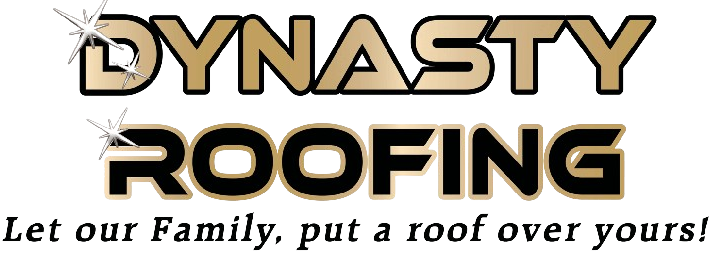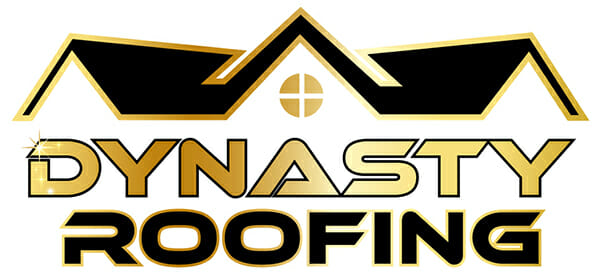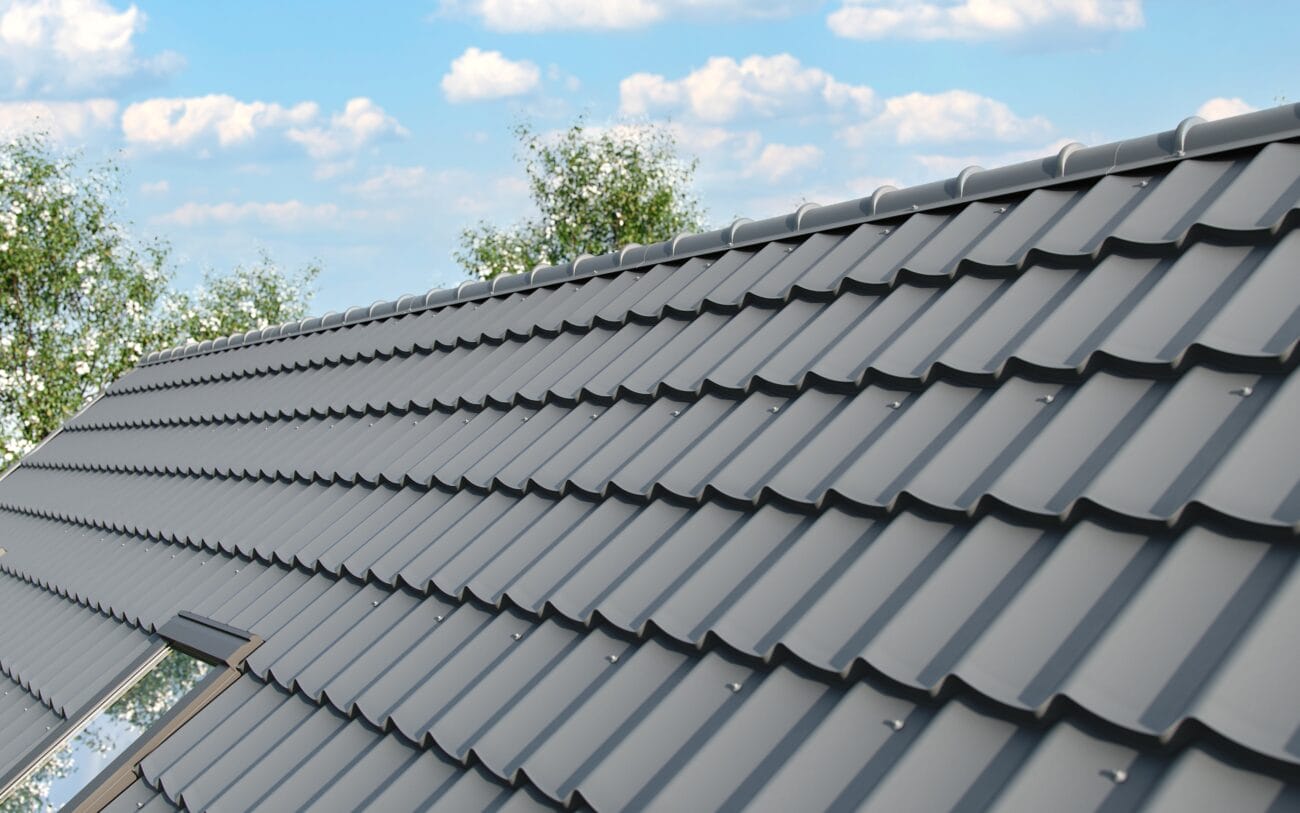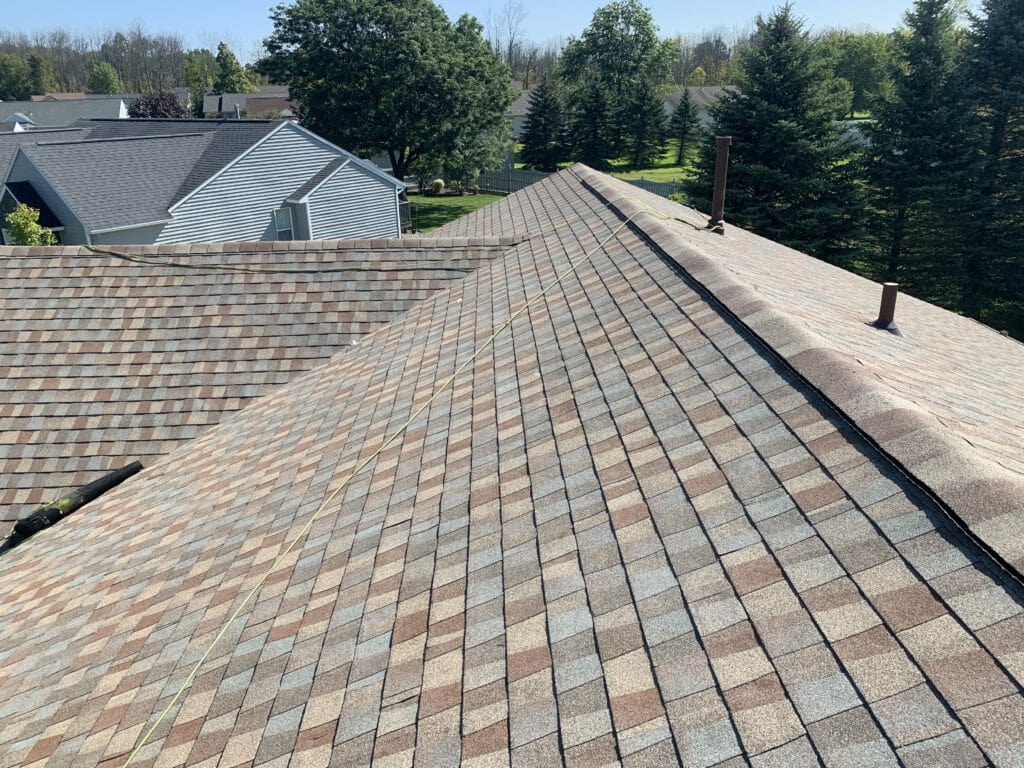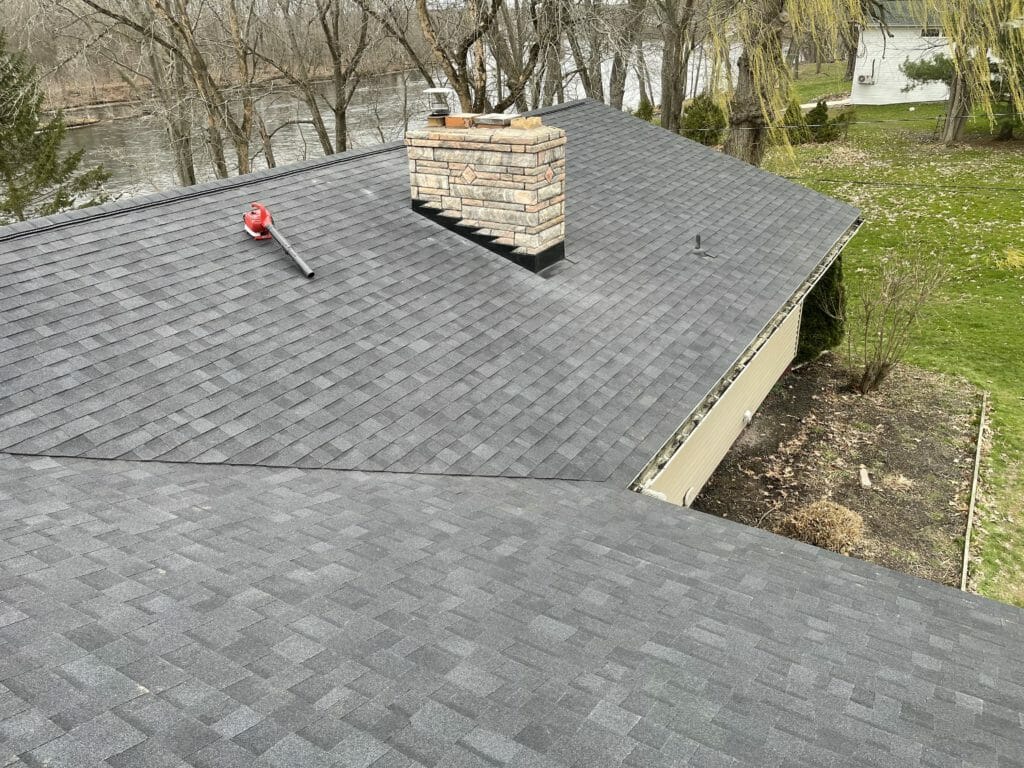Considering a new roof for your Liverpool, NY, home or another property in Onondaga County is no small decision—it’s a major investment that affects both your home’s protection and curb appeal for years to come. You might have noticed neighbors opting for sleek metal roofs or heard that they’re a long-lasting alternative to traditional shingles. Naturally, that sparks interest. However, it also raises concerns, many of which stem from widespread yet outdated myths about metal roofing.
When it comes to something as important as roof repair or replacement, you need facts, not fiction. Unfortunately, much of the confusion surrounding metal roofs stems from outdated assumptions or past experiences with early versions of the product. These misconceptions can hinder your ability to choose the best option for your home.
We believe every homeowner deserves clear, honest information. So, let’s break down the most common metal roofing myths—one by one—so you can make your next roof repair or installation with full confidence.
Metal Roofing Realities: Clearing Up Common Confusion
It’s understandable to have questions when considering alternatives to common asphalt shingles. Metal roofing has evolved significantly from the corrugated tin often seen on old barns. Today’s metal roofing systems are advanced, durable, and offer surprising versatility. Let’s examine some prevalent common misconceptions about metal construction for roofs.
Myth 1: Metal Roofs Mean Limited, Industrial Styles Only
This is a significant roofing myth, and thankfully, it’s no longer an accurate reflection of today’s metal roofing market. The notion that choosing a metal roof restricts your home’s aesthetic to a purely industrial or agricultural appearance is thoroughly outdated. You might be surprised by the wide variety of profiles, textures, and colors available in modern metal roofing products. Consider options far beyond the utilitarian standing seam design, though that style itself can offer an exceptionally sharp, clean, and modern look for contemporary architecture.
Today’s metal roofing materials can skillfully replicate the appearance of many traditional roofing materials, effectively debunking a common myth about metal roofs. You can find metal shingle designs that closely resemble classic asphalt shingles, offering familiar aesthetics with enhanced durability. If you admire the distinctive charm of wood shakes but want to avoid the demanding maintenance, fire risk, and susceptibility to rot or insects, metal can provide a reliable alternative to that rustic appeal. Even the elegant curves of Spanish tile roofing or the distinguished look of slate can be achieved with durable, stylish, and lighter-weight metal counterparts. This versatility allows you to match your metal roof to virtually any architectural style, from historic colonial homes and cozy cottages to sleek, contemporary builds, as confirmed by resources such as the Metal Roofing Alliance, which features a gallery of beautiful homes showcasing diverse metal roof styles.
To illustrate the versatility, consider how metal can mimic traditional looks:
| Traditional Look | Metal Roof Mimicry | Key Advantage of Metal |
|---|---|---|
| Asphalt Shingles | Stamped Metal Shingles (various patterns) | Significantly longer service life, superior impact resistance, and better wind uplift. |
| Wood Shakes/Shingles | Textured Metal Panels/Shingles (emulating wood grain) | Class A fire resistance, no rot/insect issues, minimal maintenance requirements. |
| Clay/Spanish Tiles | Profiled Metal Panels (barrel or S-tile shapes) | Much lighter weight (reducing structural load), less prone to breakage. |
| Slate Tiles | Stone-coated Steel Shingles or Stamped Panels | Lighter weight, often lower installation cost, and durable finishes. |
This adaptability means that common metal roof myths about limited styles are far from the truth. The metal construction can be artfully disguised or boldly contemporary.
The spectrum of colors and finishes for today’s metal roofs is also exceptionally extensive, further enhancing design possibilities. Choices range from deep, rich earth tones that blend seamlessly with natural surroundings to vibrant, bold shades that make a statement and from subtle matte finishes to striking glossy sheens, offering broad customization options for any project. This allows homeowners to personalize the appearance of their roofs, significantly enhancing curb appeal and potentially increasing property value. Therefore, the common misconception that metal roofing is visually restrictive or that all metal roofs attract unwanted attention is entirely unfounded. It is, in fact, an exciting and flexible design element for modern architecture.
Metal roofing’s aesthetic flexibility has advanced significantly, now encompassing profiles that mimic clay tiles, natural slate, and even the detailed texture of wood shakes with remarkable fidelity. This realism is achieved through sophisticated manufacturing processes, including advanced stamping techniques and multilayered coating technologies that add depth and dimension. Homeowners are no longer confined to a singular, monolithic “metal” look. Instead, they can achieve seamless integration with diverse architectural designs, from meticulously preserved historic buildings to cutting-edge, ultra-modern structures. The ability to select from a vast palette of factory-applied colors, including innovative cool roof pigments that reflect solar heat, further broadens design freedom while simultaneously contributing to the building’s overall energy efficiency, making it a practical and attractive choice.
Myth 2: Rain on a Metal Roof Sounds Like a Drum Solo
A frequent concern is whether a home with a metal roof will be excessively noisy during a rainstorm, like the inside of a tin can. This fear about a metal roof’s noisy characteristics likely stems from experiences with older, uninsulated metal structures such as sheds or barns. In reality, a properly installed metal roof on a residence can be as quiet, or even quieter, than other roofing materials, such as shingle roofing.
The solution lies in modern roof installation techniques and materials, which are crucial for mitigating concerns about noisy roofs during rainfall. Most residential metal roofing is applied over solid sheathing, such as plywood or oriented strand board (OSB), which forms the foundational deck of the roof. This solid sheathing layer itself significantly helps in deadening sound vibrations before they can enter the attic space. Additionally, high-quality underlayment installed between the sheathing and the metal panels provides an extra layer of sound-dampening, while attic insulation serves as a substantial final barrier to noise transmission, further reducing noise levels. The careful combination of solid sheathing, appropriate underlayment choices (such as synthetic felt or specialized acoustic underlayments), and sufficient attic insulation works effectively together to create a quiet and comfortable interior environment, contrary to outdated roofing myths about noise.
Furthermore, the type of metal panel and its profile can influence sound characteristics. For instance, textured metal shingles or stone-coated steel panels, due to their irregular surfaces and often smaller individual sizes, tend to diffuse sound waves more effectively than large, flat, smooth-standing seam panels. Properly fastened panels, using appropriate clips and fasteners, are also essential to prevent rattling or vibration that could contribute to unwanted noise during high winds or rain, ensuring the installed metal roof remains secure and quiet.
Research indicates that the noise from rain on an installed metal roof, when utilizing modern installation techniques and components, is comparable to, and sometimes even less than, that experienced with an asphalt shingle roof or other traditional roofing materials. The nature of the sound might differ slightly; an asphalt roof can produce a lower-frequency thud, whereas an improperly installed metal roof without adequate backing might exhibit a higher-pitched ping. However, with today’s advanced metal roof assemblies, which include multiple layers of sound-dampening materials, this ping is significantly minimized or eliminated. You can, therefore, enjoy the soothing sound of rain as a gentle ambiance rather than an intrusive disturbance. Ultimately, the quietness of a metal roof depends heavily on the quality of the roof installation, the presence of solid sheathing, and the comprehensive design of the roof assemblies. As building acoustics resources explain, strategic material choice and system design are crucial for effective sound management in any building, including those with metal roofing.
Myth 3: Metal Roofs Are Lightning Magnets
The idea that a metal roof might attract lightning, or that roofs attract lightning in general, is a frightening yet widespread myth about metal roofing. Lightning, an electrical energy phenomenon, seeks the most direct path to the ground. It’s primarily attracted to the highest point in an area, regardless of the material, making the belief that metal roofs attract lightning a common misconception.
Consider that tall trees, radio towers, and skyscrapers are frequently struck by lightning, irrespective of their primary construction material. A building’s overall height, its geometric shape, and its prominence within the surrounding landscape are far more significant factors determining the likelihood of a lightning strike than the specific roofing material used. The National Weather Service frequently debunks such roof myths, explicitly clarifying that lightning metal attraction is not a heightened concern and that metal roofs do not increase the risk of a home being struck by lightning.
Furthermore, if a home were to experience the unfortunate event of a lightning strike, a metal roof can actually offer superior safety compared to some other traditional roofing materials. Metal is fundamentally a noncombustible material, meaning it won’t ignite or support a flame if struck by lightning. In stark contrast, combustible materials such as wood shingles or even an asphalt roof (which contains petroleum products) could potentially catch fire under such circumstances. A properly installed metal roof can also help dissipate the immense electrical charge from a lightning strike more effectively and uniformly across its entire surface, potentially lessening the focused impact and reducing damage compared to a localized strike on a less conductive material. Therefore, instead of being a dangerous lightning magnet, a metal roof serves as a nonflammable, highly conductive, and protective covering that can be integrated into a comprehensive lightning protection system designed to channel electrical energy safely to the ground.
Properly grounded metal roofing systems can further enhance safety by providing a predetermined, low-resistance path for the lightning’s immense electrical energy to follow directly to the earth. This grounding is a key aspect of comprehensive lightning protection for any structure, regardless of its roofing material. The inherently highly conductive nature of metal enables it to efficiently manage and distribute the electrical charge from a lightning strike, often without sustaining significant structural damage, provided the overall lightning protection system is correctly designed and installed by qualified professionals. This makes metal an advantageous material when considering how to best protect a structure from lightning strikes.
Uncovering More Truths: Metal Roofing Myths Debunked Further
We’ve addressed some major common metal roof myths, but several other misunderstandings persist. Obtaining accurate information is crucial when considering such a vital component of your home. A roof provides more than just shelter from rain. It protects your family and belongings and contributes to your home’s comfort and efficiency.
Myth 4: Metal Roofs Can’t Handle Hailstorms
It’s understandable to worry about hailstones denting or damaging your roof. No homeowner wants their roof to be damaged after a hailstorm. While extremely large hail can affect nearly any roofing material, today’s metal roofs are constructed robustly to withstand severe weather, including considerable hail impacts.
Many metal roofing products, especially those made from steel or thicker gauge aluminum, carry high impact resistance ratings, such as the UL 2218 Class 4. This is the highest classification for impact resistance, rigorously tested by dropping a 2-inch steel ball multiple times from a height of 20 feet onto the roofing material, which must then show no signs of splitting, cracking, or fracturing that would compromise its water-shedding ability. While this stringent rating doesn’t guarantee absolute immunity from cosmetic denting in all severe hail events (especially from very large or irregularly shaped hailstones), it clearly indicates the material’s inherent toughness and ability to withstand significant impacts. The Insurance Institute for Business & Home Safety often discusses and tests the resilience of various roofing systems, frequently highlighting the superior performance of many metal roofing products against hail compared to more fragile materials. For example, steel roofs often perform very well against hail. Aluminum, while lighter, can also be quite resilient depending on its thickness and alloy.
The panel’s profile, texture, and finish also contribute significantly to its hail resistance and ability to mask potential minor indentations. For instance, metal roofing systems with heavily textured surfaces, such as those designed to mimic wood shakes or stone-coated metal shingle products, can effectively hide minor cosmetic dings if they do occur from smaller hail. Compared to asphalt shingles, which can suffer significant granule loss (exposing the underlying mat to UV degradation), cracking, or even complete puncturing from moderate to large hail, high-quality metal roofing typically performs far better, maintaining its structural integrity and crucial protective qualities over its long service life.
In the event of exceptionally large or dense hailstones that might cause some cosmetic denting on a metal roof, the functional integrity of the metal panels is often fully maintained. This means the roof continues to protect the home from water intrusion and the elements without leaking, unlike some other roofing materials that might crack, fracture, or puncture, necessitating immediate and costly roof replacement or repairs. The resilience of today’s metal roofing against hail is a key factor in its growing popularity in hail-prone regions.
Myth 5: Metal Roofs Make Your House Hotter in Summer and Colder in Winter
This common misconception stems from the understanding of metal as a simple heat conductor. Touching a hot metal car on a sunny day reinforces this idea. However, many metal roofs are highly energy-efficient, often outperforming traditional asphalt shingles in this regard. This energy efficiency is a significant benefit, making metal roofing a smart investment for many homeowners.
Many modern metal roofs are classified as “cool roofs” due to their advanced surface properties. They frequently feature highly reflective coatings, often incorporating special pigments, or possess inherent reflective capabilities that redirect a substantial portion of the sun’s heat and incident solar radiation back into the atmosphere, away from the building. This process means they absorb heat far less efficiently than darker, more absorbent traditional roofing materials such as asphalt shingles, which can get extremely hot. The U.S. Department of Energy explains that these cool roofs can significantly reduce attic temperatures, sometimes by as much as 50–60 degrees Fahrenheit, especially during the peak of hot summer months. A substantially cooler attic space means your air conditioning system operates less frequently and for shorter durations to maintain comfortable indoor temperatures, leading to noticeable energy savings and reduced utility bills during summer months.
Regarding winter performance, a common misconception is that a metal roof will make your house colder. This is incorrect if the building incorporates a properly insulated roofing system. The attic insulation, not the metal roofing material itself, is the primary component responsible for retaining heat within the home during colder weather. A metal roof does not negatively impact the effectiveness of this insulation. In fact, some specific roof installation methods, such as those using battens or purlins to create an air gap between the metal panels and the roof deck, may even help to reduce heat loss by forming an additional thermal break, further enhancing the home’s energy efficiency. Thus, far from being an energy liability, a properly installed metal roof can be an excellent energy-efficient roofing choice for year-round comfort, helping to reduce heat gain into the home during summer and assist in retaining heat during winter.
The thermal mass of metal is comparatively low, meaning it doesn’t store or retain a large amount of heat like denser materials such as concrete or tile. Consequently, once the sun sets or cloud cover moves in, a metal roof cools down rapidly. This quick heat dissipation further contributes to lower attic temperatures overnight and reduces the heat radiated back into the living space, improving overall energy efficiency and comfort compared to traditional roofing materials that might hold onto the sun’s heat for many hours after sunset.
Myth 6: Metal Roofing Is Way Too Expensive
Cost is a frequent consideration and is often perceived as a barrier. The initial cost of installing a metal roof is typically higher than that of conventional asphalt shingles. Depending on the type of metal, style, and complexity of the roof, this initial outlay can be two to three times greater or more.
However, it’s vital to look beyond this initial sticker shock and consider the total lifecycle cost, not just the up-front expense. Metal roofs offer exceptional durability and a remarkably long service life, frequently lasting 50–70 years or even more, with some manufacturers providing warranties that match this extended duration. In stark contrast, conventional asphalt shingles usually require a complete roof replacement every 15–25 years, depending on quality and climate. Over the course of 50 years, an asphalt roof may need to be replaced two, three, or even four times, each instance incurring repeated labor, material, and disposal costs. With metal roofing, the initial investment often covers the home’s roofing needs for several decades, potentially for the entire time you own the house or even for the next generation.
Additionally, substantial long-term savings accrue from the minimal maintenance requirements associated with most metal roofs. Unlike some materials that require regular cleaning, repair, or treatment, metal roofing generally requires very little upkeep beyond occasional inspections and the removal of debris from gutters. Factoring in the significant potential energy savings from reduced heating and cooling loads, as well as possible homeowners insurance premium discounts offered by some companies for impact-resistant and fire-resistant metal roofs, the overall cost of ownership becomes increasingly favorable over time. Furthermore, a high-quality, well-maintained metal roof can notably enhance a home’s curb appeal and resale value, making metal roofing’s higher initial cost a financially sound and smart investment in the long run for those planning to stay in their home or maximize its future marketability.
Considering the extended long service capabilities, superior weather resistance (including high winds, hail, and fire), and the potential for lower insurance premiums, metal roofing offers substantial, quantifiable value. The prolonged service life alone means homeowners can avoid the considerable cost, disruption, and hassle of multiple reroofing projects over the decades. These combined factors contribute significantly to a lower overall cost of ownership over the roof’s lifespan, firmly positioning metal as a smart investment for discerning homeowners who prioritize durability, performance, and long-term financial benefits. Today’s metal roofing is truly built to last.
Myth 7: Metal Roofs Will Rust and Corrode Quickly
The image of old, rusty tin sheds or weathered barn roofs can cause concern about rust and corrosion with metal roofing. Such worries are understandable for a component as exposed as a roof. However, today’s metal roofing products are vastly different from old, untreated metal sheets. The fear of rusted metal roofs is largely a relic of the past.
Modern metal roofing systems, a far cry from their predecessors, utilize advanced coatings and base materials specifically engineered to resist rust and corrosion effectively. For many years, metal roofing technology has undergone significant advancements. For example, steel roofs, a common metal roof choice, are typically protected by robust metallic coatings such as galvanization (a sacrificial layer of zinc) or Galvalume® (a patented alloy of zinc and aluminum). These sophisticated coatings create a durable, multilayered barrier that effectively prevents environmental moisture and oxygen from reaching the steel substrate and initiating the rusting process, thereby providing long-term protection against degradation. The protective mechanisms of such coatings are well-documented by industry resources, such as the Galvanizers Association of Australia, which provides detailed explanations of how galvanizing protects steel from corrosion.
Materials such as aluminum are inherently rust-resistant due to the rapid formation of a tenacious, protective aluminum oxide layer on their surface when exposed to air, making them excellent choices for roofing, particularly in harsh coastal regions with high humidity and salt-laden air. Other premium metals, such as copper and zinc, also develop unique, attractive patinas over time. These patinas are not signs of harmful corrosion but rather stable, protective surface layers that further shield the underlying metal from atmospheric attack. Selecting a high-quality, appropriately treated, and coated metal roof from a reputable manufacturer, and when correct roof installation is performed, leads to decades of reliable protection without significant concerns about rust or corrosion affecting the roof’s performance or appearance over its extensive service life. The myth that rusted metal roofs crumble quickly is simply not applicable to today’s metal systems.
The advancements in paint systems and coating technology, such as the widespread use of PVDF (polyvinylidene fluoride, often sold under brand names such as Kynar 500® or Hylar 5000®) finishes, also provide exceptional color retention and resistance to chalking and fading from UV exposure, in addition to their primary anticorrosion properties. These high-performance finishes are baked onto the metal coils before forming, creating a resilient and flexible surface. This means your installed metal roof will not only resist rust effectively but also maintain its aesthetic appeal and vibrant color for a significantly longer period than many traditional roofing materials, ensuring both long-term visual quality and structural integrity.
Conclusion
In Liverpool, NY, many homeowners are reevaluating their roofing options—especially after uncovering the truth behind these long-standing metal roofing myths. With today’s advanced materials and installation methods, many of the outdated concerns simply don’t apply anymore. Modern metal roofs not only deliver outstanding durability and energy savings but also offer a surprising range of design choices and better noise control than you might expect.
Deciding on a new roof is no small task. Local homeowners want more than just good looks—they need lasting protection, peace of mind, and fewer worries about future roof repairs. Now that these misconceptions have been cleared up, metal roofing stands out as a smart and appealing solution. Having the right facts in hand makes it easier to choose a roof that supports your home and your lifestyle for the long haul.
